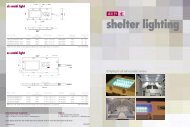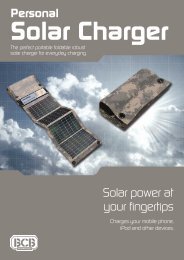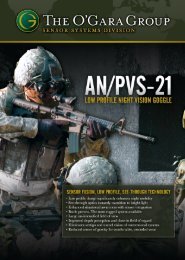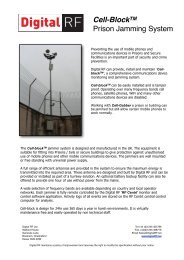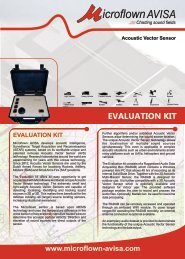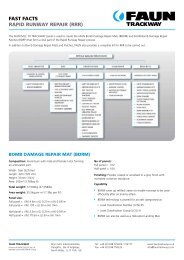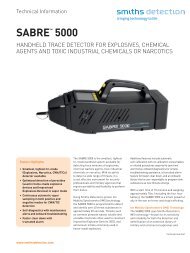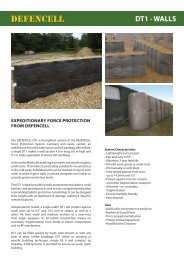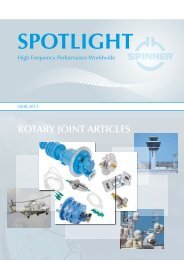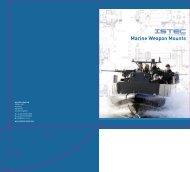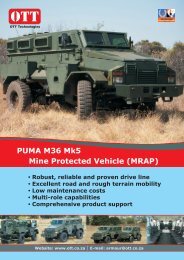Catalog 300 - Kaydon Bearings
Catalog 300 - Kaydon Bearings
Catalog 300 - Kaydon Bearings
Create successful ePaper yourself
Turn your PDF publications into a flip-book with our unique Google optimized e-Paper software.
©KAYDON ® Corporation Issue 10 REALI-SLIM ® <strong>Bearings</strong> <strong>Catalog</strong> <strong>300</strong><br />
Bearing Selection (continued)<br />
required, a face-to-face pair can be mounted in<br />
conjunction with another bearing in a “fixed-float”<br />
arrangement with the pair in the fixed position.<br />
(Also see Section 3, Mounting.)<br />
Tandem bearing sets have single direction thrust<br />
capacity and must be mounted opposed to another<br />
bearing or set.<br />
When applying catalog load ratings to matched sets,<br />
the total radial capacity is considered equal to the<br />
single bearing radial rating multiplied by N 0.7 , where N<br />
is the number of bearings in the set. The thrust capacity<br />
in each direction is considered equal to the single<br />
bearing thrust rating multiplied by N 0.7 , where N is the<br />
number of bearings resisting thrust in that direction.<br />
Unless specifically requested, the outboard faces of<br />
bearing sets are not controlled. If outboard face<br />
flushness is required for preload purposes, universally<br />
ground bearings should be considered. On universally<br />
ground bearings, both inboard and outboard faces are<br />
matched under a specified gage load to control preload<br />
and allow for mounting orientation flexibility.<br />
Type X—Four Point Contact<br />
whose centers are offset from the plane of the ball<br />
centers (Figure 3-8). The latter construction gives the<br />
Type X bearing its unique “Gothic Arch” configuration,<br />
making possible four contact points between a ball and<br />
the raceways.<br />
Type X bearings are assembled by the methods described<br />
in Type C bearings, either Conrad or filling slot. With a<br />
filling slot, both the dynamic radial and thrust<br />
capabilities are impaired by the interruption of the ball<br />
contact path, and speed of rotation must be limited.<br />
The depth of groove in the Type X bearing is the same<br />
as in Types A and C (25% of ball diameter). The deep<br />
groove combined with the four-point contact geometry<br />
enables this bearing to resist a combination of radial,<br />
thrust, and moment loading. The manner in which the<br />
bearing accomplishes this is similar to that of a pair of<br />
Type A bearings duplexed back-to-back.<br />
Section 3–Applications Engineering<br />
Figure 3-6<br />
Type C<br />
Figure 3-7<br />
Type A<br />
The Type X Four-Point Contact ball bearing is<br />
distinguished from Types A and C by the geometry of its<br />
ball grooves. In Type C, the centers of the radii both lie<br />
in the plane of the ball centers (Figure 3-6). In Type A<br />
with the races and balls in angular contact, the centers<br />
of the groove radii are offset equal amounts on either<br />
side of the plane of the ball centers (Figure 3-7). In the<br />
Type X bearing the groove in each race has two radii<br />
Figure 3-8<br />
Type X<br />
1-800-514-3066 www.kaydonbearings.com |69



